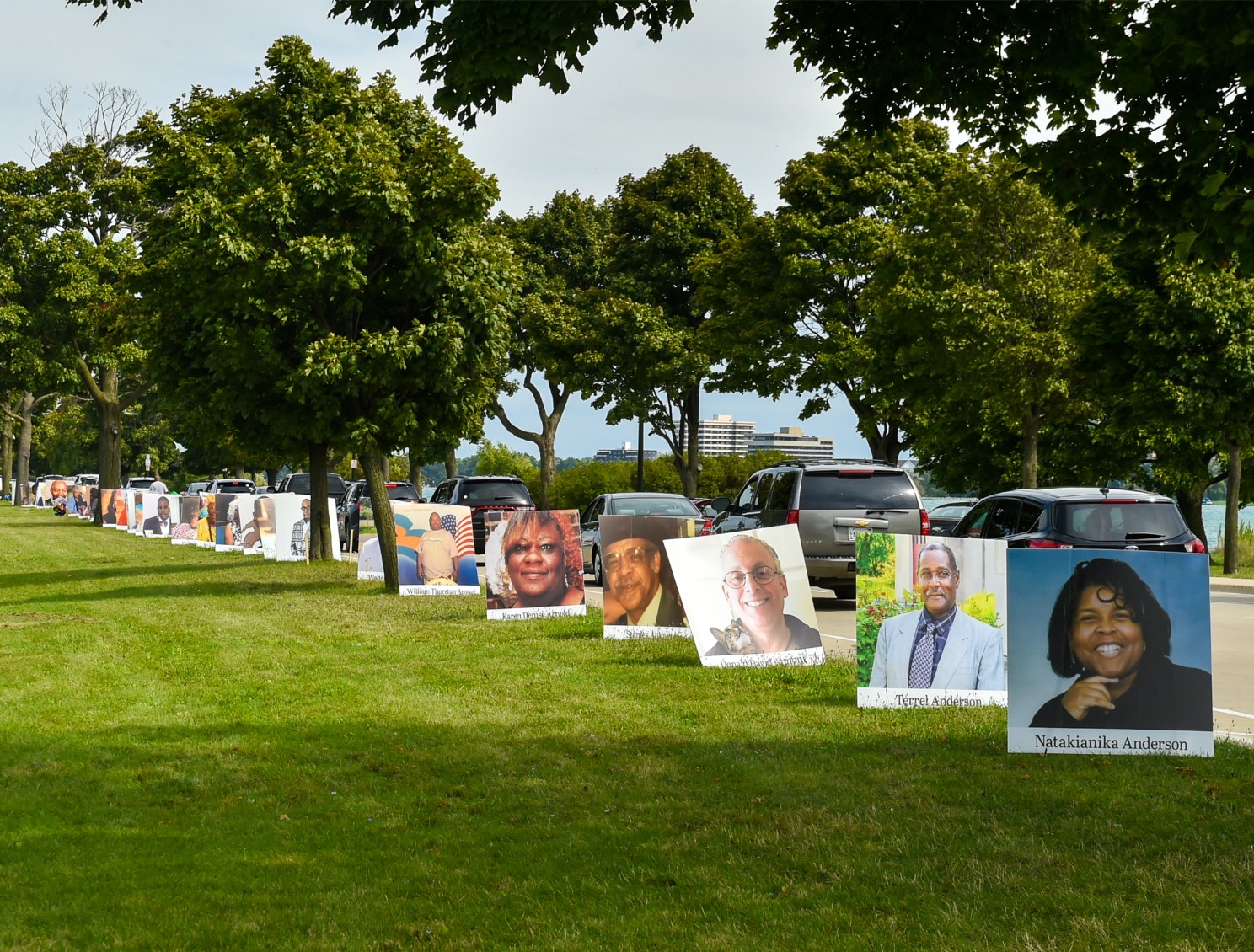Researchers measure impact of inequalities on COVID-19 deaths among people of color

Photos of COVID-19 victims at roadside in Detroit. Photo: Asron J. Thornton, Getty Images
It was evident soon after the onset of COVID-19 that it disproportionately harmed Black and Latino communities in the United States — hardly the great equalizer that some predicted the pandemic would be.
Now three health economists have measured those inequities by analyzing and comparing death rates over the first year of the pandemic, and their results are especially stark, with challenging implications for health care policymakers. One conclusion is that the racial and ethnic inequities are primarily due to sociodemographic factors and their differing effects on historically disadvantaged groups, rather than preexisting health conditions.
“The Great Unequalizer: Initial Health Effects of COVID-19 in the United States” was published on Monday as a National Bureau of Economic Research working paper. The three co-authors, Harvard Kennedy School Professors Marcella Alsan and Amitabh Chandra, and Kosali I. Simon of Indiana University’s O’Neill School of Public & Environmental Affairs, are among the nation’s leading health policy scholars.
They begin with some history of inequities in prior epidemics, beginning with a cholera outbreak in Boston in 1849 that killed Irish immigrants at a rate over twice that of native-born Bostonians. They also looked at the 1918 flu pandemic and the HIV/AIDS outbreak in the 1980s.

The authors quoted Rudolf Virchow, the founder of modern cellular pathology, who wrote in 1848 on the need to measure the disparate impacts of infectious disease: “Statistics will be our standard of measurement: We will weigh life for life and see where the dead lie thicker, among the workers or the privileged.”
Applying that same mortality yardstick, the three authors drew from available data to compare deaths during 2020 from COVID-19 in the United States and then quantify the inequalities.
The authors assessed the impact of health inequality and find that “Black, American Indian, and Hispanic people died almost always at greater rates.” Black Americans suffered mortality 25 percent above the norm, and Hispanic deaths were 39.5 percent higher relative to the baseline trend.
And the disparities were markedly worse for younger people of color. “The already higher number of Black and Hispanic pandemic-related deaths disproportionately occurred among the young.” Looking at those data through the lens of “years of potential life lost,” they found that Black Americans lost 4.2 times more years of life per person under age 65 than non-Hispanic white Americans, and Latinos lost 2.9 times more years of life.
“Far from being an equal opportunity pathogen, SARS-Cov-2 has exposed societal cleavages between less privileged and more advantaged groups,” the authors wrote.
Their analysis found the differences in health outcomes “cannot be attributed to a greater prevalence of pre-existing conditions, lower neighborhood levels of education, or geographical disadvantage alone. Rather, otherwise similar Black and Hispanic individuals, all of whom are insured in our sample, are hospitalized at a higher rate than non-Hispanic whites.”
These results “are consistent with the broader narrative that Black and Hispanic individuals face institutional disadvantages, including inconsistent providers, lower-quality care, and systemic racism, that worsen their returns to similar endowments and contribute to COVID-19 health inequality.”





